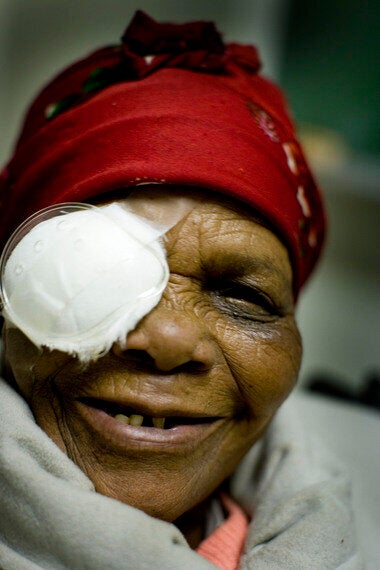
*Karen Hong [2015] completed an MPhil in Epidemiology at the University of Cambridge with the support of a Gates Cambridge Scholarship. She is currently a fourth-year medical student at Stanford University School of Medicine. Picture credit: Kate Holt/AusAID [CC BY 2.0 (http://creativecommons.org/licenses/by/2.0)], via Wikimedia Commons.
Has science finally discovered the "cure" for blindness? Just this week, news sources reported on the exciting breakthrough spearheaded by Dr Andrew Huberman at the Stanford University School of Medicine of using visual stimuli to encourage the regrowth of visual neurons in mice. Several other articles in the last month have similarly heralded the cure to blindness, from stem cell implants that restore dead eye tissue to gene therapy injections for inherited conditions. With these novel advances, how close are we to truly eliminating the world of blindness? To assess this question, we must examine the current state of global eye health.
Cataract surgery
The most common causes of global visual impairment from the 1980s have been treatable for decades. This has led to some significant public health successes, including a 50-90% reduction in eye infections and childhood eye disease in the last 30 years. Now, cataracts, a clouding of the lens of the eye, have become the leading cause of blindness. Removing cataracts require the skill of an expert surgeon and typically lasts 15 minutes. There are four main challenges in establishing cataract surgery programmes.
First, there is a shortage of eye care specialists in developing countries where 90% of people with visual impairment reside. For example, there are only seven ophthalmologists to serve the entire country of Rwanda. This means each doctor is responsible for well over a million citizens. In contrast, the United States has about 25,000 ophthalmologists, meaning there are 83 doctors to serve a population of one million. The Inverse Care Law further compounds the problem - an observed phenomenon where good medical care is inversely related to medical need.
Second, in contrast to having a high demand for care, some places with poor infrastructure cannot bring in enough surgical patients to the hospital. It can be difficult to raise awareness about eye health or to transport patients if most villages and towns are in remote locations, cut off from urban city centres.
Third, the cost of surgery is an economic barrier. It is necessary to establish self-sustaining programmes to cover costs. Solutions include implementing sliding scale or tiered payment systems where more affluent patients who can afford private rooms and better amenities subsidise the cost of less affluent patients who receive the same medical care without the added post-surgical luxuries.
Lastly, there is cultural and societal wariness about treatment in some communities. Citizens who have never been to a city hospital may see or hear about sick friends and family who make the days-long trek to seek treatment, only to die at the hospital or never return. The benefit of cataract surgery is not immediately apparent to many.
Public health innovations
Public health initiatives have come up with innovative solutions to these problems. Mobile surgical camps have increased the spread of eye health in countries with poor access to care.
The Aravind Eye Hospital chain in India has created groundbreaking low-cost cataract equipment to offer sustainable treatment. The Himalayan Cataract Project, started by Dr Sanduk Ruit in Nepal, has spread to over six other countries due to its commitment to training doctors from developing countries. One way Dr Ruit overcomes the stigma of treatment is to show the surgical process on a television screen in the waiting area so patients can see the process from start to successful end result. In addition, organisations like Peek Vision seek to integrate portable eye examination technology into healthcare systems, making sure those identified with cataracts end up receiving treatment.
While we live in exciting times for vision restoration, the latest scientific medical advances are low on the list of reasons why 39 million people in the world still remain blind today. The "cure" to blindness lies in addressing the age-old problems of poverty, infrastructure, manpower and access to care.
